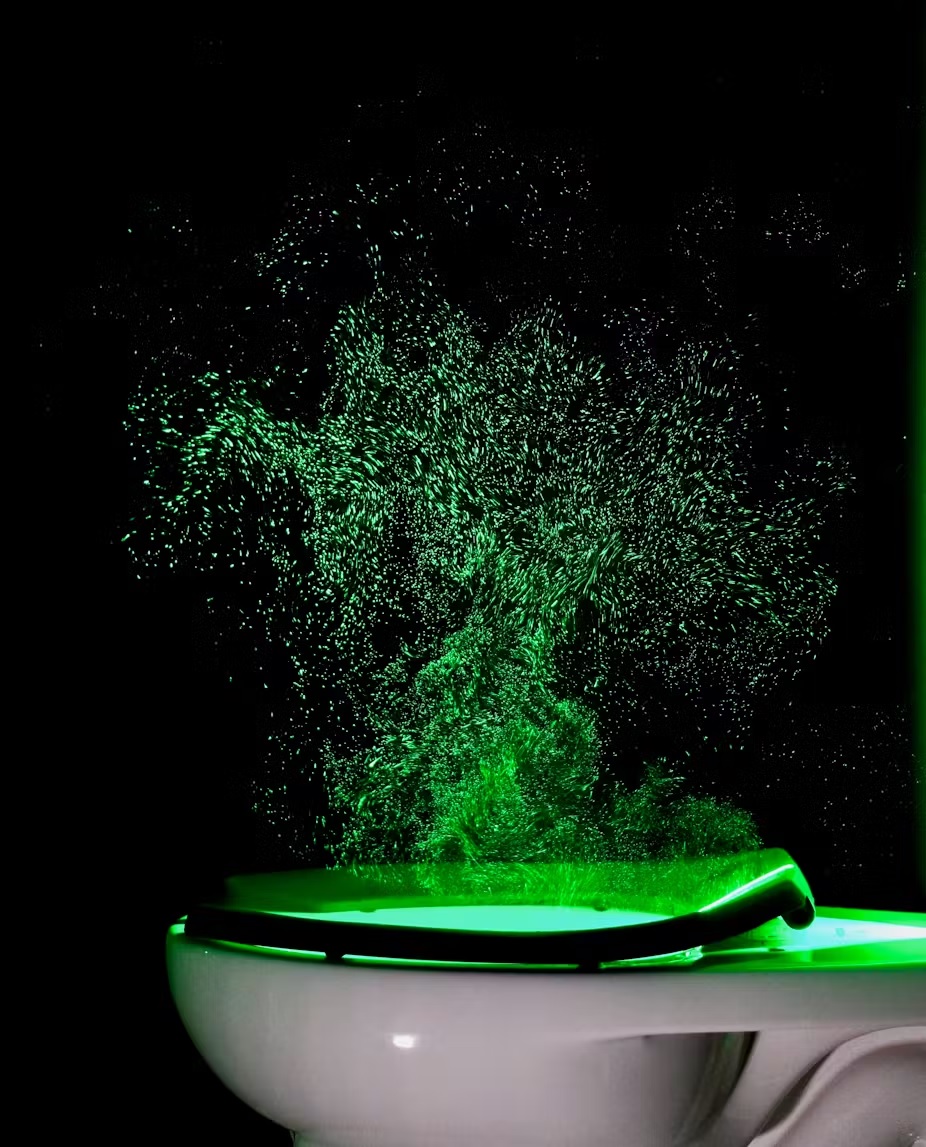Understanding and mitigating toilet aerosol plumes
Each time you flush a toilet, small water droplets are released into the surrounding air in plumes. These droplets, known as aerosol plumes, have the potential to expose users of public bathrooms to infectious diseases and spread pathogens from human waste.
As explained here, because aerosol plumes are generally invisible, scientific comprehension of their propagation and public knowledge of their existence have been hindered. With the use of high-power lasers, John Crimaldi, Aaron True, Karl Linden, Mark Hernandez, Lars Larson, and Anna Pauls were able to picture and measure the spread of aerosol plumes from flushing commercial toilets in great detail.
Up instead of down
During the flush cycle, water is forced into the bowl’s contents, causing a thin spray of particles to fly into the air.
Within eight seconds of the flush beginning, researchers discovered that a standard commercial toilet produces a powerful upward jet of air that travels at speeds greater than 6.6 feet per second (2 meters per second). This jet quickly carries these particles up to 5 feet (1.5 meters) above the bowl.
In their lab, they installed a standard lidless commercial toilet with a flushometer-style valve, which is widely available across North America, in order to view these plumes. Flushometer valves distribute water into the bowl through the use of pressure instead of gravity. They lit the area from the top of the bowl to the ceiling with a thin vertical sheet of laser light created by using sophisticated optics. The aerosol particles scatter enough laser light to become visible after flushing the toilet using a remote electrical trigger, which enables us to photograph the particle plume with cameras.
They were taken aback by the force with which the jet expelled the particles from the bowl, despite their expectation that they would be present.
A related study predicted the creation of aerosol plumes using a computational model of an idealized toilet; the model showed that particles would travel upward above the bowl at a rate of roughly 3.3 feet per second (1 meter per second), which is about half of what they saw when using a real toilet.
Why lasers?
For many years, scientists have been aware that aerosol particles can be released into the air when toilets are flushed. Nevertheless, to determine the quantity and size of particles that toilets produce, experimental research has predominantly relied on devices that collected air samples at fixed sites.
Although these previous approaches can verify the existence of aerosols, they don’t tell us anything about the physics of the plumes—that is, how big they are, how quickly they move around, or how they look. The development of mitigation techniques to lessen the creation of aerosol plumes and their potential to spread disease depends on this information.
Using lasers to determine the many ways that complex fluid flows move different things is a field of John Crimaldi’s laboratory as an engineering professor whose research focuses on the linkages between fluid physics and ecological or biological processes. These things are frequently invisible until we use lasers to illuminate them.
One benefit of measuring fluid flows with laser light is that, in contrast to a physical probe, light does not interfere with or change what is being measured. Additionally, since humans are visual creatures, employing lasers to make invisible objects visible helps in their understanding of the complexities of the dynamic environment they live in.
Aerosols and disease
Important human disease vectors are aerosol particles that carry diseases. People may be exposed to respiratory problems from smaller particles that remain in the atmosphere for a while. When larger particles come into contact with the hands or lips, they can easily settle on surfaces and spread intestinal infections like norovirus.
Pathogen concentrations in feces-contaminated toilet bowl water can last for dozens of flushes. Whether or not toilet aerosol plumes pose a risk of transmission is still up for debate.
Limiting toilet plume spread
The experimental methodology employed here lays the groundwork for future investigations testing various solutions aimed at reducing the potential for disease exposure resulting from toilet flushing. This might entail evaluating modifications to the aerosol plumes emitted by newly designed toilet bowls or flush valves that alter the length or force of the flush cycle.
There are techniques that reduce human exposure to toilet plumes in the meantime. The obvious tactic is to close the lid before flushing. This does not, however, totally remove aerosol plumes, and many public, commercial, and healthcare restrooms lack lids. In the bathroom, exposure to aerosol plumes could potentially be reduced via UV disinfection systems or ventilation.

